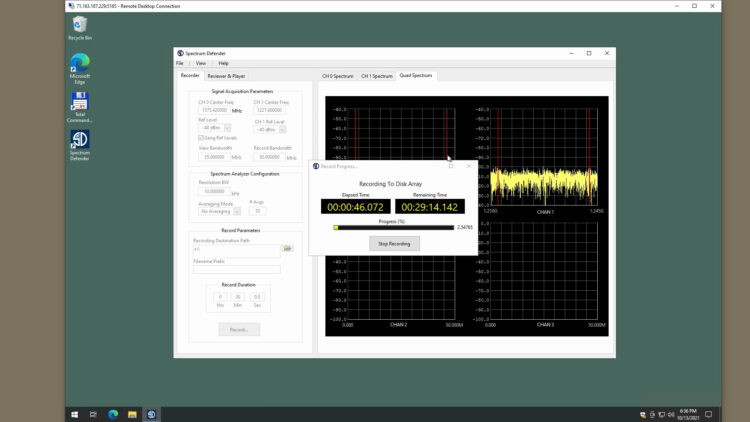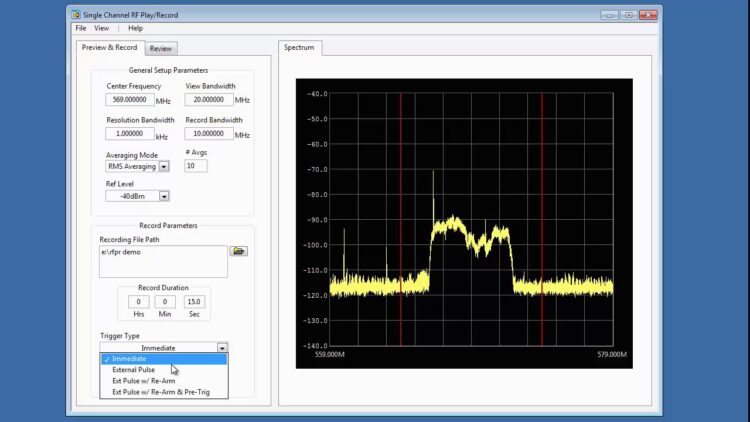Video Transcript:
Hello, and welcome to our video. My name is Sean Wallace, and today I’d like to show you a multichannel configuration of Spectrum Defender’s recorder module.
On the screen here, you see a multichannel user interface with three channels of active RF signal acquisition.
We’re running on a National Instruments PXI Express platform with three VSAs or vector signal analyzers, and each VSA is connected to a separate antenna. So, we have three VSAs, three channels, connected to three separate antennas. And the hardware is configured to operate in a phase synchronous mode, which means that the three channels track one another both in center frequency and phase. So as I adjust the center frequency here from six gigahertz down to seven hundred and fifty one megahertz, you can see that they track one another both in center frequency and phase. So this type of configuration is commonly used for MIMO applications or direction finding or comparing the performance of different types of antennas. There’s many different applications for phase synchronicity.
And if you’ve watched any of our other videos, you probably recognize this user interface. It’s very similar to our single channel user interfaces. We have a basic spectrum analyzer display, which allows us to find signals before we start recording. Now, I happen to know that there is a television signal at five sixty nine megahertz, which is pretty interesting.
There we go. So, we’ll tune to that and zoom in a little bit. I’ll tighten the span up to ten megahertz so we can get a better look.
Okay. So, that’s the same TV signal, the same center frequency coming in on three different antennas, and you can see the very distinctive nature of the interference that’s been applied to each because each of those three channels has undergone a slightly different propagation path.
So those differences in multipath from one channel to the next are exploited by MIMO technology to improve the receivability of this signal.
So this is a very interesting test case for recording, and I’ll go ahead and start a recording.
And there we go. The signal data is streaming to the high speed disk array. And while that’s running, I’m gonna dig into a little bit of detail here about how we obtain and maintain phase synchronicity across all the channels. The first thing we need to do is share all of the local oscillators across all of the channels. So typically, the master vector signal analyzer shares its LL with all of the other channels. And the second thing we need to do is share all of the a to d sample clocks between each channel. And the third thing we need to do is share a start trigger across all channels.
So the start trigger is what allows phase synchronicity to be maintained from one recording to the next without recalibration.
So shared star triggers make recalibration, unnecessary.
Okay. So the recording is finished. Let’s move over to the reviewer module here, and we’ll take a look at the recording we just made. And there you go. You can see all three channels and recorded with very high fidelity.
Thanks for watching the video. And if you’re interested in these technologies, please share your email address with us, and we’ll keep you updated as we release new videos. Thanks for watching.

